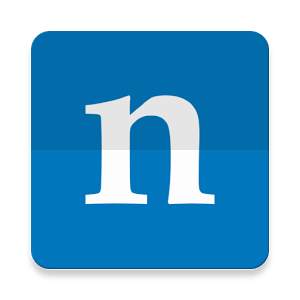There's always more than one way to approach the creation of an app and in the case of note-taking, it's very easy to make things too simple or too complex. From a design standpoint, powerful Android apps can sometimes leave intuitiveness and beauty aside (see Titanium Backup for more details).
neutriNote is a new app, currently in beta, that combines a simple and attractive front-end with a litany of features that can and should appeal to power users, especially of the academic type.
The app comes from the developer behind Minutes Text Notes, a very similar set of free and paid apps. neutriNote is designed to be more streamlined than Minutes, with relatively fewer options. Emphasis here is on relative, since neutriNote can be quite complex, though more of that power is under the hood.
neutriNote creates a local repository, or in other words a user-defined folder to store all of its settings and your notes. Most apps store your info on the device, but this one makes it obvious to the user so that configuration is easier. You may use an external app to cloud sync the folder where your local repository is. The developer provides a $0.99 extension app that will sync to Dropbox for you with no sweat, but there are free ways of doing so if you want to avoid the expense.
You can search within the text of your notes in addition to using a built-in tagging system for even more fine-tuned organization schemes. When you open the app, the default behavior is to show you all your files, but neutriNote also allows you to choose specific tag- and search-based filters as the default. Your location is also recorded when you write notes, providing the ability to search and filter by specific places.
Also, in case it needed to be pointed out after the above screenshots, there is a dark mode. There is another $0.99 add-on app that will automatically switch between light and dark according to the time of day with the help of Tasker.
It is hopefully becoming obvious that neutriNote can be used as a pretty simplistic manager for plain-text notes, but can also be personalized to the needs of even the most idiosyncratic workflows.
Fittingly, the actual note-taking experience allows for both a basic approach and highly formatted documents. The built-in rendering engine makes it possible for you to view notes written in PHP Markdown Extra (a special flavor of the popular markup language that outputs to PHP rather than HTML) and write mathematical equations with LaTeX syntax.
Here's one simple example of how you can take your Markdown text document and then view it with a single tap:
For a look at some of the cool stuff you can do with PHP, here's an example pulled from the user documentation:
There is even more you can do that I haven't yet covered. The developer has been pushing out updates at a rapid pace, with non-trivial changes in many of them. Since it is in beta, don't expect perfection just yet. I had a few issues come up on my KitKat device, but they improved over the course of a couple days of updates.
You can go straight to the Play Store or join the beta testing group on Google+.

